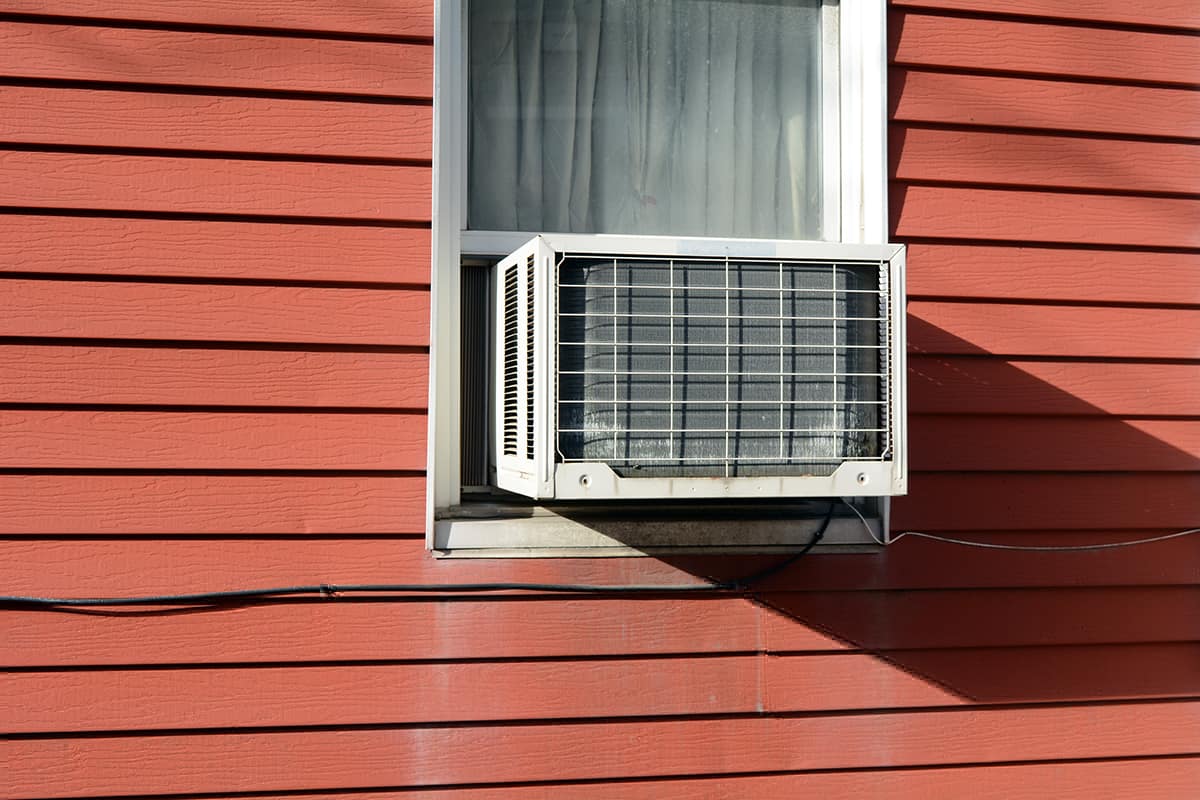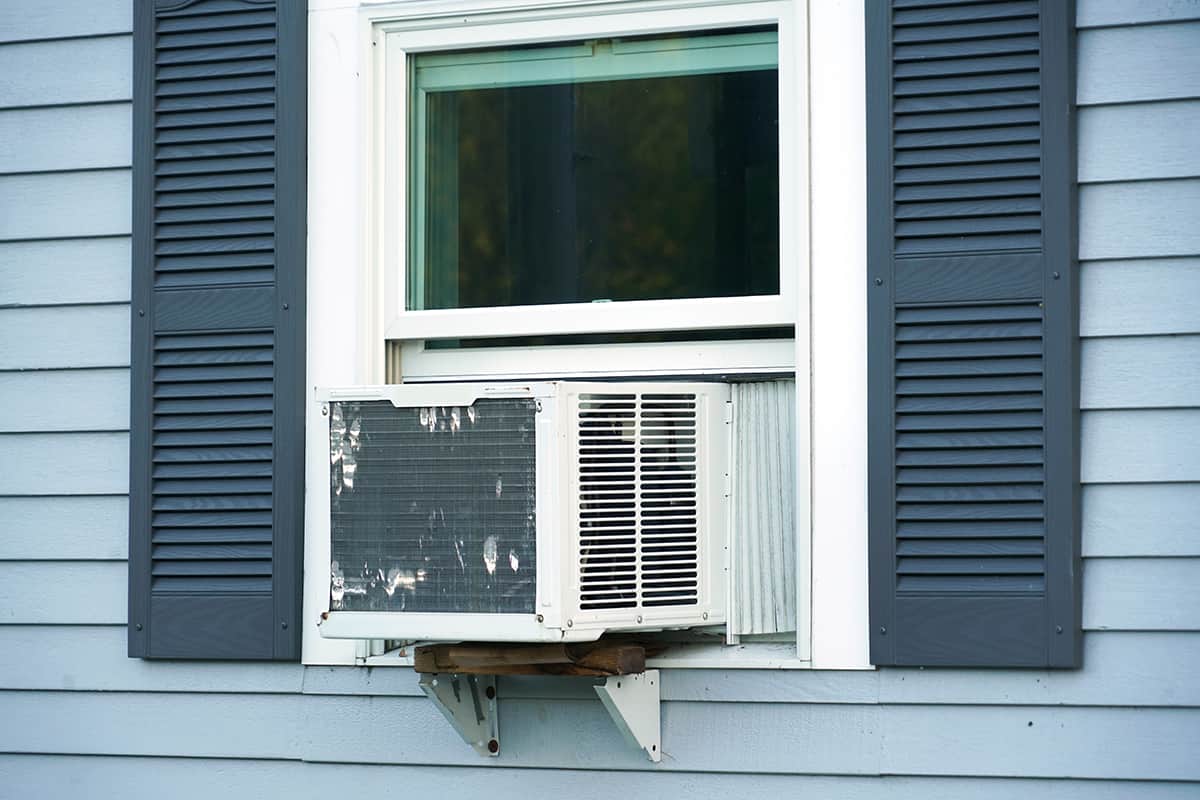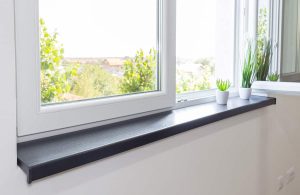Window air conditioning units work by sucking the hot air into the unit, cooling it down, then pumping it back out into the room. They are a really popular way of making temperatures more bearable in homes during hot times of the year, but many people incorrectly buy a window air conditioner that is the wrong size for their room.
Here we will look into the factors that affect the size of window air conditioner you need and how to calculate the best option for your room.
Calculating the Right Window Air Conditioner Size
Room size
The most important calculation to make when choosing a window air conditioning unit is room size. If you don’t factor in any other components when choosing the size of your air conditioning unit, be sure to factor in this one.
Air conditioning units measure their power in BTUs, which stands for British Thermal Units, and this is used across the world to measure energy. The BTU of an air conditioning unit essentially tells you how many square feet that unit is able to cool down, so getting the measurement of your room right and choosing the appropriate BTU size is essential.
This is where many people go wrong and will buy a unit that is too small for their room, which means they never get as cool as they would like, and the unit has to run overtime just to make the temperature bearable.
Alternatively, if you buy an AC unit that is too powerful for the size of the room, then you’re simply wasting money when you could have bought a smaller-sized model.
To get this measurement right, you’ll want to measure your room. If your room is square or rectangular, then this is pretty easy; just take a tape measure and measure the longest wall and the shortest wall, and multiply these numbers together.
For example, 15 feet x 8 feet will give you 120 square feet. If the room is an awkward shape, then segment it down into smaller squares and rectangles, then add all of these final figures together.
When you have the square foot measurement of your room, you can set this against the BTU measurement on the available window air conditioning units. Each unit will clearly display its BTU, or you can figure out in advance which size you need. For rooms that are between 100 and 150 square feet, you will need a BTU of 5000.
For rooms that are between 150 and 250 square feet, you will need a BTU of 6000. For rooms that are between 250 and 300 square feet, you will need a BTU of 7000. For rooms that are between 300 and 350 square feet, you will need a BTU of 8000.
For rooms that are between 350 and 400 square feet, you will need a BTU of 9000. For rooms that are between 400 and 450 square feet, you will need a BTU of 10,000. For rooms that are between 450 and 550 square feet, you will need a BTU of 12,000. For rooms that are between 550 and 70 square feet, you will need a BTU of 14,000.
Room height
The BTU output of a window air conditioning unit is based on a room with a standard ceiling height of 8 feet. If your ceiling is taller than this, then you are going to require a greater BTU to sufficiently cool the room.
Every 2 feet in height represents 25% room capacity since 8 divided into quarters is 2. This means that if your room is 2 feet taller than standard height, with a total height measurement of 10 feet, then you’ll want to add an additional 25% onto your room square footage size or multiply your total figure by 0.25.
If the room height is 12 feet, then you’ll need to add an extra 50% on top of your square footage measurement or multiply your total figure by 0.5.
Energy efficiency
The energy efficiency rating of a room is important when you are choosing a window air conditioning unit because this will determine how much energy is lost in the space and at what rate. If the room is well insulated, then your air conditioning unit is going to be able to cool it down quicker and more effectively.
That room is also going to remain cooler for longer compared with a room that has poor insulation. In older homes that lack insulation and have poor energy efficiency, you should choose an air conditioning unit with a higher BTU level because these rooms will take more energy to cool down.
Aspect
The aspect of your room is going to affect how hot or cool it gets, and this will affect how powerful your window air conditioning unit needs to be. If your room is facing a southern aspect and sits in the sun all day, then you should add 10% to the BTU output requirements of your unit.
If the room is in the shade all day or is protected by a large leafy tree, then it won’t get as hot, and therefore, you can deduct 10% from your BTU output needs.
Is Window Size Important?
The physical dimensions of a window air conditioning unit are important because it is going to be useless if it won’t fit in your window. Measure the widest opening of your window beforehand and ensure that your chosen air conditioning unit will fit into this space.
The unit doesn’t need to fit snugly into the window frame because they come with accordion-style fittings that fill in the gap between a small unit and a wide window frame.
Generally speaking, a window air conditioning unit with a higher BTU will be larger than one with a smaller BTU. The smallest size window air conditioner is around 10 inches by 10 inches, while the largest is around 26 inches by 26 inches.







